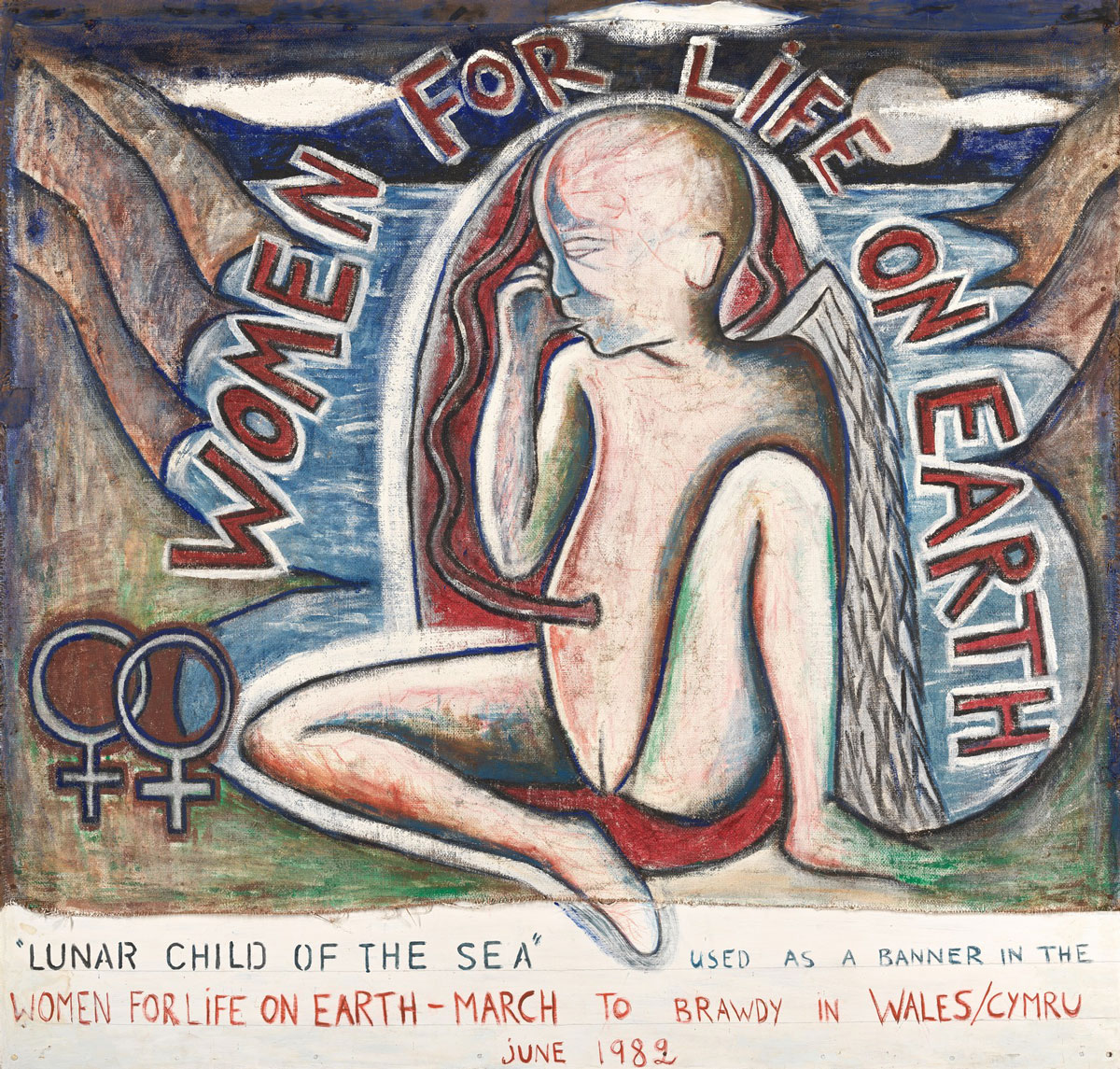PREVIEW: Monica Sjöö-The Great Cosmic Mother
 In recent decades, broad socio-political shifts have contributed to a reassertion of feminist narratives in contemporary visual culture. This, combined with emerging environmental awareness in response to the climate emergency, has enabled a critical reappraisal and new appreciation of previously overlooked artistic figures whose resonance with the present is just beginning to be celebrated.
In recent decades, broad socio-political shifts have contributed to a reassertion of feminist narratives in contemporary visual culture. This, combined with emerging environmental awareness in response to the climate emergency, has enabled a critical reappraisal and new appreciation of previously overlooked artistic figures whose resonance with the present is just beginning to be celebrated.
By Dimitris Lempesis
Photo: Moderna Museet Archive
Monica Sjöö was a Swedish-British artist, activist, writer and eco-feminist. Art, politics and spirituality are inseparable in her oeuvre, and Sjöö became a key figure in the British women’s liberation movement. With a deep commitment to women’s rights and environmentalism, she fought uncompromisingly for freedom from any form of oppression. The retrospective “The Great Cosmic Mother” exhibition introduces visitors to Monica Sjöö’s works that were all created to promote social change, causing controversy and cries for censorship at the time. Their subject matter and messages are just as relevant today. Presenting some fifty works from Sjöö’s entire practice, it spans from monumental paintings to political posters and banners, drawings, and archival material. Several of these artworks have never been shown to the public, and have now been restored by the Moderna Museet conservators so that this ground-breaking Swedish artist can be introduced to a new audience. The first-ever monograph over Monica Sjöö will be published in conjunction with the exhibition. Monica Sjöö was born in Härnösand in 1938 but spent most of her adult life in Bristol. Her political consciousness was formed early on by the Vietnam War protests, the anarchist movement and the independent art scene in Stockholm. Here, in the 1960s, she met the artist Siri Derker, who had a formative influence on her. Derkert’s involvement in the women’s movement and her work with early environmental activists such as Elin Wägner and Rachel Carson, strengthened Sjöö in her convictions and led her to eco-feminism. In the UK, Monica Sjöö became an active spokesperson for women’s issues and organised several political campaigns and action groups. Her manifesto “Towards a Revolutionary Feminist Art” (1971) (one of the first and most militant, feminist art manifestos) and collectively-organised exhibitions of women artists laid the foundations for the British feminist art movement and contributed to the development of the international women’s movement at the time. Monica Sjöö was controversial throughout her life, and her works are challenging to this day. In raw and bold imagery, she was an early advocate of women’s right to sexual self-determination and abortion. Today, her painting “God Giving Birth” (1968) is a feminist icon, but at the time it was considered both blasphemous and vulgar. When it was shown in the UK in the 1970s, it repeatedly provoked strong reactions, and Sjöö was prosecuted for obscenity. Another iconic painting from the same year is “Back Street Abortion – Women Seeking Freedom from Oppression”, which was acquired by Moderna Museet in 2012. The many attempts to censor Monica Sjöö merely strengthened her resolve to portray women’s experiences in her art. Against prevailing artistic ideals, she created figurative and representational art to show the real situation of women – their lives, work and struggles. Sjöö rejected abstract art as empty play with words and form and a Western male privilege: “How does one communicate women’s strength, struggle, rising up from oppression, blood, childbirth, and sexuality in stripes and triangles?”, she wrote in “Towards a Revolutionary Feminist Art” (1971), Monica Sjöö’s commitment to women’s liberation and environmentalism were inseparable from her spiritual belief that everything was connected – a cosmic world view, expressed in “The Great Mother”, whose essence permeated both nature and being, according to Sjöö. Sjöö viewed the oppression of women and minorities, along with the exploitation of land and the ravishing of nature, as an unforgivable violation of “The Great Mother”. Monica Sjöö’s writings and publications on “The Great Mother” were the result of lifelong research on prehistoric female figures in various cultures and religions. She co-authored “The Great Cosmic Mother: Rediscovering the Religion of the Earth” (1987), a publication that became seminal to radical Goddess feminism circles, especially in the UK and on the US west coast. In the 1980s arms race, the peace movement was revitalised, and Monica Sjöö organised several political grassroots campaigns. With women’s groups such as “Women for Life on Earth”, she also participated in peace marches and anti-nuclear arms camps, including the Greenham Common Women’s Peace Camp, where peace activism, eco-feminism and spirituality were interwoven with women’s community, dance and singing.
Photo: Monica Sjöö, The Great Cosmic Mother, Installation view, 2023 Photo: Mattias Lindbäck/Moderna Museet
Info: Curator: Jo Widoff and Amy Budd, Moderna Museet, Skeppsholmen, Stockholm, Sweeden, Duration: 13/5-15/10/2023, Days & Hours: Tue & Fri 10:00-20:00, Wed-Thu & Sat-Sun 10:00-18:00, www.modernamuseet.se/stockholm/

Center: Monica Sjöö, Sheela na Gig, Creation, 1978, © Museum Anna Nordlander, Skellefteå (deposition from The Estate of Monica Sjöö). Photo: Albin Dahlström/Moderna Museet
Right: Monica Sjöö, Cosmos Within Her Womb, 1971, © The Estate of Monica Sjöö, Photo: Albin Dahlström/Moderna Museet

Right: Monica Sjöö, Emma Goldman, 1967, © Museum Anna Nordlander, Skellefteå. Photo: Albin Dahlström/Moderna Museet


Monica Sjöö, The Goddess at Avebury and Silbury, 1978, © Museum Anna Nordlander, Skellefteå (deposition from The Estate of Monica Sjöö). Photo: Albin Dahlström/Moderna Museet



